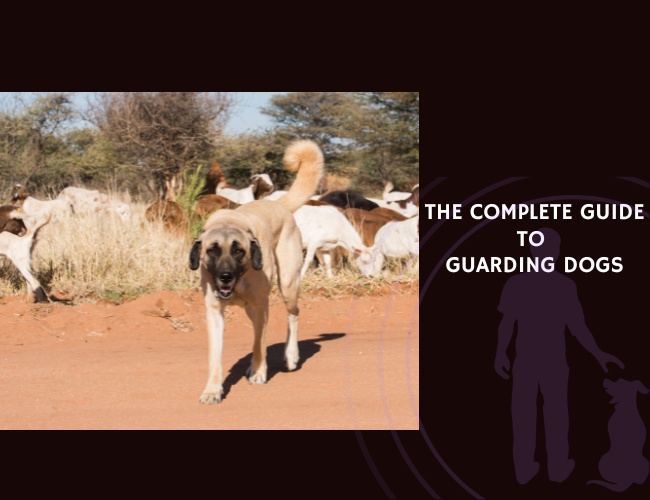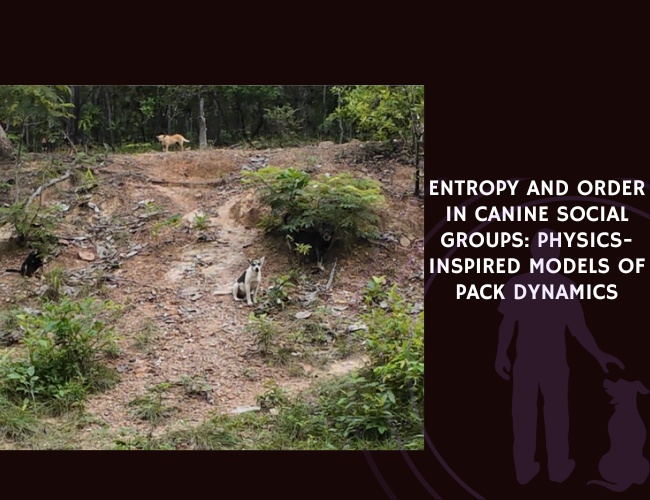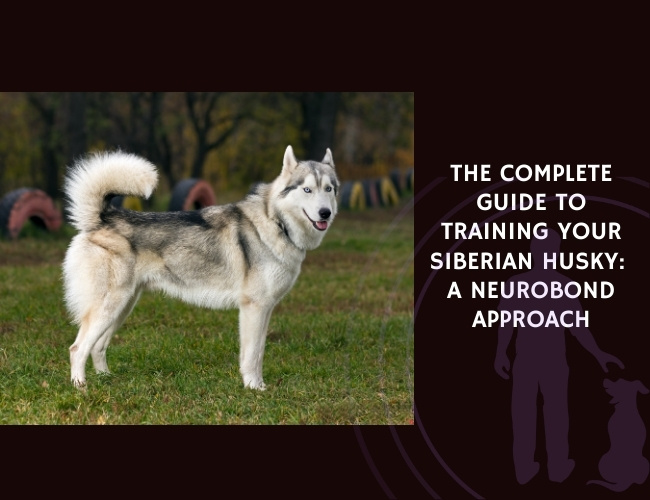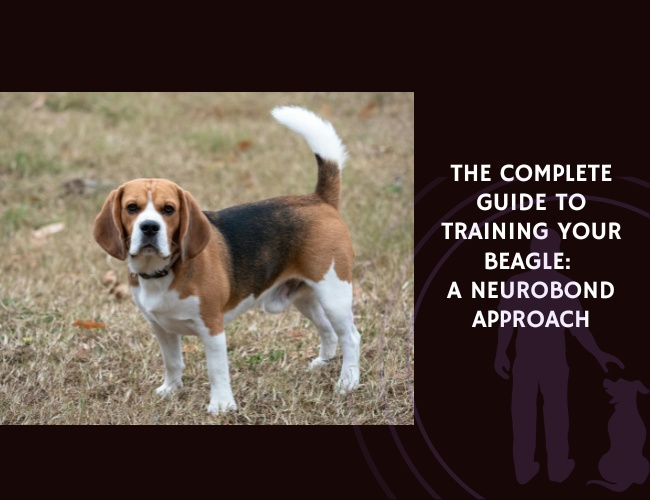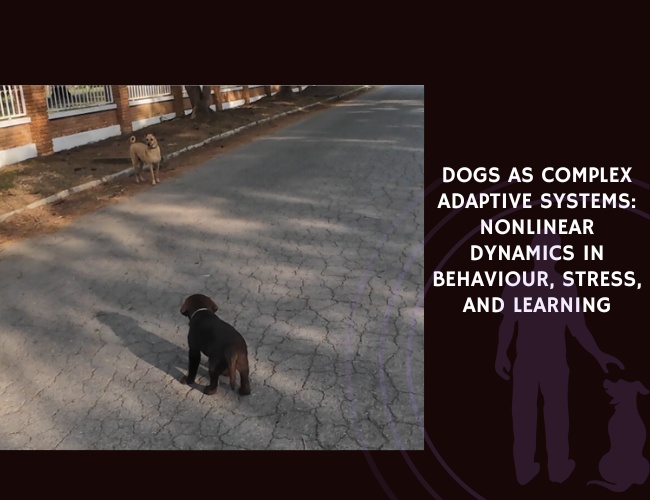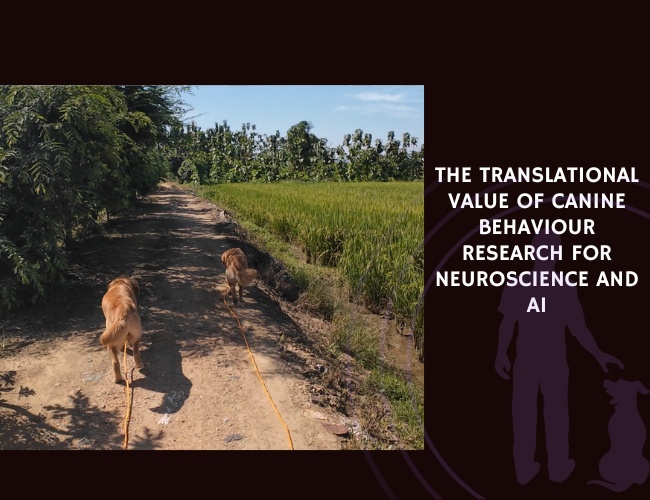Introduction: The Ancient Bond of Protection
For over six thousand years, dogs have stood as sentinels between danger and those they protect. From the windswept mountains of ancient Anatolia to modern suburban homes, guarding dogs represent one of humanity’s most enduring partnerships. Did you know that archaeological evidence shows dogs and sheep buried together as far back as 3685 BC? This tells us something profound about the trust our ancestors placed in these remarkable animals.
Today’s guarding dogs carry this ancient legacy in their DNA, whether they’re protecting a flock of sheep in the Pyrenees or watching over your family in the suburbs. But here’s what many people don’t realize: not all guarding dogs are created equal, and understanding these differences could be the key to finding your perfect protective companion. Let us guide you through the fascinating world of these loyal guardians, from their neurobiological makeup to their unique emotional needs.
Understanding Guardian Types: More Than Just “Guard Dogs”
When you think of a guard dog, what comes to mind? Perhaps a fierce Rottweiler behind a chain-link fence, or maybe a Great Pyrenees peacefully watching over sheep? The truth is, guarding dogs represent a beautifully diverse spectrum of breeds, each evolved for specific protective roles.
The Two Primary Guardian Categories
The guardian dog world divides into two main branches, each with distinct characteristics that have been shaped by millennia of selective breeding. Livestock Guardian Dogs (LGDs) are the gentle giants who live full-time with the animals they protect, becoming part of the flock rather than controlling it. These dogs make independent decisions, often working for days without human supervision. In contrast, Personal and Property Protection Dogs form close bonds with humans, protecting families and homes with a more directed, trainable approach.
You might notice that your neighbor’s German Shepherd behaves very differently from the Great Pyrenees at the local farm – and there’s a fascinating reason for this. Personal protection dogs have been bred to take direction, to look where you point, to retrieve objects, and to work closely with human handlers. Meanwhile, LGDs will look at your hand rather than where you’re pointing, rarely play with toys, and make their own decisions about threats. This isn’t stubbornness – it’s thousands of years of specialized evolution at work.
The Three Levels of Protection Work
Within the world of property protection, dogs work at three distinct levels, and understanding these can help you choose the right dog for your needs. Alarm dogs serve as your early warning system, using their bark to alert you to potential threats. Sentry dogs take it a step further, actively patrolling property boundaries and investigating disturbances. Finally, attack dogs – though less common in family settings – are trained to physically engage threats on command, requiring extensive professional training and handling expertise.
The Neurological Architecture of Protection: What Makes a Guardian
Have you ever wondered why your Anatolian Shepherd seems to “just know” when something’s amiss, even when you haven’t noticed anything unusual? The answer lies deep within their neurological wiring, shaped by thousands of generations of selective breeding.
The Guardian Brain: Nature’s Security System
Recent genetic studies on over 14,000 dogs have revealed something remarkable: the behavioral traits that make excellent guardians are highly heritable. Inhibitory control – the ability to remain calm and assess situations before acting – shows a heritability of 70%. This means your livestock guardian’s measured, thoughtful response to potential threats isn’t just training; it’s literally written in their genes.
The amygdala, that almond-shaped cluster of neurons processing emotions and threats, functions differently in guardian breeds compared to other dogs. While a Border Collie’s brain lights up with excitement at movement (perfect for herding), a Great Pyrenees shows a more regulated response, allowing them to distinguish between a falling leaf and a genuine predator. This neurological difference explains why your guardian dog might seem “aloof” compared to more reactive breeds – they’re actually performing complex threat assessment that other dogs simply aren’t wired to do.
Genetic Markers of Protection
Scientists have identified 131 specific genetic markers associated with guardian behaviors, concentrated in genes highly expressed in the brain. The EPHB1 gene, linked to spatial memory and controlled movement, appears significantly in livestock guardian breeds. This genetic signature helps explain their remarkable ability to maintain territorial boundaries while staying close to their charges – a behavior that seems simple but requires sophisticated cognitive processing.
What’s particularly fascinating is that Eastern and Western guardian breeds have evolved these traits independently for millennia, yet arrived at remarkably similar behavioral outcomes. Your Tibetan Mastiff and your Maremma Sheepdog, despite developing on different continents, share an ancient understanding of protection that transcends geography. 🧡
Behavioral Psychology: The Guardian Mindset
Understanding how your guardian dog thinks can transform your relationship with them. These aren’t just “stubborn” or “independent” dogs – they’re sophisticated decision-makers operating on an entirely different wavelength from companion breeds.
The Three Pillars of Guardian Behavior
Every effective guardian dog, whether protecting sheep or family, exhibits three core qualities that behavioral researchers have identified as essential. Trustworthiness means they won’t roam off when you need them most and won’t show aggression toward those they’re meant to protect. Attentiveness reflects their constant environmental scanning, that subtle head-tilt when a car door closes three blocks away. Protectiveness manifests as their willingness to place themselves between danger and their charges, whether that’s a flock of sheep or your children.
These traits work together in a delicate balance. A dog that’s protective but not attentive might miss real threats. One that’s attentive but not trustworthy might chase after every stimulus, leaving their post unguarded. The magic happens when all three qualities harmonize, creating that legendary guardian temperament that has protected human interests for thousands of years.
Understanding Independent Thinking
“Why won’t my Pyrenees fetch like my neighbor’s Lab?” This question reveals a fundamental misunderstanding of guardian psychology. Your livestock guardian isn’t being difficult when they ignore your thrown tennis ball – they’re exhibiting the same independent judgment that allows them to decide, without human input, whether that rustling in the bushes is a threat or just a rabbit.
This independent thinking can be challenging for owners accustomed to eager-to-please breeds. But consider this: when a wolf approaches a flock at 3 AM, there’s no shepherd there to give commands. The dog must assess the situation, choose an appropriate response, and execute it autonomously. This same mental framework operates whether they’re on a remote hillside or in your backyard. Learning to work with, rather than against, this independent nature is key to a harmonious relationship with your guardian.
Training Your Guardian: Patience, Understanding, and Respect
Training a guardian dog requires a fundamental shift in approach from traditional obedience training. You’re not creating a dog who blindly follows commands; you’re developing a thinking partner who understands their role and makes appropriate decisions.
The Critical Bonding Window
Between 8 and 16 weeks of age, your guardian puppy’s brain is particularly receptive to forming the social attachments that will define their protective relationships. For livestock guardians, this means careful exposure to the animals they’ll protect. For family guardians, it means positive experiences with all family members, especially children. Miss this window, and you might find your dog struggles to properly identify who belongs and who doesn’t.
Modern training approaches have evolved from the old “minimal human contact” philosophy. Romanian shepherds, with centuries of experience, have shown us that puppies socialized with both humans and livestock from an early age develop into more balanced adults. These dogs can distinguish between genuine threats and passive visitors, reducing liability while maintaining protective effectiveness. Your guardian doesn’t need to be suspicious of everyone – they need to be discerning.
The Two-Year Journey to Reliability
Here’s something that might surprise you: your guardian dog isn’t considered fully reliable until about two years of age. This extended adolescence isn’t a flaw – it’s nature’s way of ensuring these dogs develop the judgment necessary for their crucial role. During this time, they need consistent guidance, not harsh correction. Think of yourself less as a trainer and more as a mentor, helping your dog understand the nuances of their protective role.
Supervision during this period involves teaching subtle distinctions. The mail carrier is not a threat. The deer at the property line doesn’t require a response. But that unfamiliar person approaching your children at the park? That warrants attention. These lessons can’t be rushed or forced. They develop through consistent, patient exposure and gentle correction when needed.
Breed Profiles: Finding Your Perfect Guardian Match
Let’s explore some remarkable guardian breeds, each with unique characteristics shaped by their historical roles and environments. Understanding these differences will help you choose a guardian whose natural tendencies align with your lifestyle and protection needs.
Livestock Guardian Breeds: The Gentle Giants
Great Pyrenees: The Patient Protector
Sometimes called the “Pyr,” these magnificent white dogs embody the phrase “gentle giant.” Their temperament – described by the AKC as “smart, patient, calm” – makes them excellent for families with children. But don’t mistake their calm demeanor for laziness. A Pyrenees can accelerate from peaceful lounging to fierce protection in seconds when they perceive a genuine threat.
What makes the Great Pyrenees special is their ability to modulate their response. They’ll bark to warn off potential threats (and yes, they bark a lot – it’s their first line of defense), but they rarely escalate to physical confrontation unless absolutely necessary. This measured approach, developed over centuries in the Pyrenees mountains, makes them suitable for suburban settings where aggressive dogs would be problematic. King Louis XIV didn’t declare them the “Royal Dog of France” for nothing – these dogs combine elegance with effectiveness.
Anatolian Shepherd: The Ancient Athlete
With origins stretching back several thousand years in Asia Minor, the Anatolian Shepherd represents one of the oldest guardian lineages. The AKC describes them as “loyal, independent, and reserved” – but these words barely capture their remarkable capabilities. These dogs possess the speed to catch a wolf, the endurance to patrol for hours, and the intelligence to outwit predators.
What’s particularly fascinating about Anatolians is their success in conservation efforts. In Namibia, they’re protecting endangered cheetahs by guarding livestock, reducing farmer-predator conflicts. This same adaptability makes them excellent for large properties where they need to make independent decisions about various threats. However, their strong territorial instincts and independence require an experienced owner who understands guardian dog psychology.
Komondor: The Corded King
Hungary’s national treasure, the Komondor, presents one of the most distinctive appearances in the dog world. Those incredible cords aren’t just for show – they protect against weather and predator attacks while helping the dog blend with sheep. The breed standard describes them as “loyal, dignified, and brave,” and centuries of Hungarian shepherds would agree.
The Komondor’s temperament reflects their role as the “king” of livestock guardians. They’re more serious and less demonstrative than Pyrenees, with a stronger suspicious streak toward strangers. This makes them exceptional estate guardians but potentially challenging in neighborhoods with lots of foot traffic. Their coat requires significant maintenance, but for those willing to invest the time, you’ll have a guardian whose very appearance deters most threats.

Personal Protection Breeds: The Human Partners
German Shepherd: The Versatile Guardian
No discussion of protection dogs would be complete without the German Shepherd. These remarkable dogs have earned their reputation through consistent excellence in roles from police work to family protection. What sets German Shepherds apart is their unique combination of protective instincts and trainability. They want to please you while also wanting to protect you – a balance many breeds struggle to achieve.
German Shepherds excel at reading human emotions and intentions, making them exceptional at distinguishing between normal interactions and genuine threats. They’re protective without being overly aggressive, alert without being hypervigilant. This makes them ideal for families who want a dog that can switch from playing with children to defending the home. Their intelligence means they need mental stimulation, but it also means they can learn complex protection protocols that would frustrate less capable breeds.
Belgian Malinois: The Professional’s Choice
If German Shepherds are the versatile family guardians, Belgian Malinois are the elite athletes of the protection world. These dogs possess an intensity and drive that can be breathtaking to witness. Their agility, quick response time, and incredible work ethic make them the preferred choice for military and police units worldwide.
However – and this is crucial – Malinois aren’t typically suited for average families. Their high energy and strong prey drive mean they’re happiest when engaged in protection work several hours daily. Without adequate physical and mental outlets, they can become destructive or neurotic. Think of them as Formula One race cars: incredible machines that require expert handling and aren’t meant for grocery runs. If you’re considering a Malinois, be honest about whether you can provide the intensive engagement they need.
Rottweiler: The Thoughtful Defender
Rottweilers bring a different energy to protection work. Where Dobermans might react quickly and German Shepherds eagerly engage, Rottweilers exhibit a methodical, calculated approach. They assess situations thoroughly before acting, making them highly reliable guardians who rarely make mistakes in judgment.
This thoughtful nature, combined with their imposing physical presence, creates a powerful deterrent effect. Most threats evaporate when faced with a Rottweiler’s steady, confident gaze. They’re naturally protective of family, especially children, but require early socialization to ensure they can distinguish between normal social interactions and genuine threats. Their calm confidence makes them excellent for families who want a guardian that won’t overreact to everyday situations.
Health and Wellness: Caring for Your Guardian
Guardian dogs, particularly the giant livestock guardian breeds, have unique health considerations that prospective owners must understand. These aren’t just big dogs – they’re athletes and workers whose bodies endure significant stress throughout their lives.
Size-Related Health Challenges
Large and giant breeds face several health issues related to their size. Hip and elbow dysplasia occur frequently in guardian breeds, potentially limiting their mobility and working ability. You might notice your young guardian showing reluctance to jump or climb stairs – don’t dismiss this as laziness. Early detection and management can significantly improve outcomes.
Bloat (gastric dilatation-volvulus) represents a life-threatening emergency more common in deep-chested breeds like Great Pyrenees and Anatolian Shepherds. Understanding the signs – unsuccessful attempts to vomit, distended abdomen, restlessness – could save your dog’s life. Many owners of at-risk breeds opt for preventive gastropexy surgery, especially for working dogs far from immediate veterinary care.
The shortened lifespan of giant breeds (typically 8-12 years versus 12-15 for medium breeds) reflects the intense metabolic demands of maintaining such large bodies. This reality makes every year with your guardian precious and emphasizes the importance of preventive care.
Nutritional Needs of Working Guardians
Your guardian’s nutritional needs vary dramatically depending on their activity level. A working livestock guardian patrolling 100 acres has vastly different caloric requirements than a suburban family guardian. Overfeeding inactive guardians leads to obesity, stressing joints and shortening lifespans. Conversely, underfeeding working dogs compromises their ability to protect and maintain body condition through weather extremes.
Growth rate management is crucial for giant breed puppies. Rapid growth can cause developmental orthopedic diseases, so resist the temptation to “bulk up” your puppy. Slow, steady growth produces healthier adults. Many experienced guardian owners feed adult food to puppies, controlling growth through portion size rather than using high-calorie puppy formulas.
Mental Health and Enrichment
Here’s something that might surprise you: guardian dogs can suffer from depression and anxiety, particularly when prevented from fulfilling their protective instincts. A livestock guardian confined to a small yard without anything to protect may develop neurotic behaviors like excessive barking, digging, or even self-harm through licking or chewing.
Mental enrichment for guardians doesn’t mean puzzle toys and agility courses (though some enjoy these). It means providing appropriate outlets for their protective instincts. This might involve:
- Regular perimeter walks where they can “patrol” their territory
- Supervised interaction with the beings they protect (children, other pets, livestock)
- Varied environments that require threat assessment and decision-making
- Positive reinforcement when they appropriately identify and respond to non-threats
Remember, a mentally satisfied guardian is a reliable guardian. Boredom and frustration compromise their judgment and may lead to inappropriate protective responses. 🐾
Practical Day-to-Day Management: Living with Your Guardian
Living with a guardian dog means adapting your daily routine to accommodate their unique needs and instincts. Unlike a typical family pet who might nap contentedly while you’re at work, your guardian is always “on duty,” making decisions about potential threats even when you’re not there to guide them. Let’s explore how to create routines and management strategies that work for both you and your protective companion.
Daily Routines by Guardian Type
The Livestock Guardian’s Day
Your Great Pyrenees or Anatolian Shepherd operates on a different schedule than most dogs. They’re naturally nocturnal, most active when predators historically hunted. A typical day might look like this:
5:00 AM – Morning patrol after a busy night of watching. They’ll check perimeters, mark boundaries, and assess any overnight changes. This is when they’re most receptive to training or interaction, having completed their night shift.
8:00 AM – 4:00 PM – Sleep period. Don’t expect much activity; they’re conserving energy for evening duties. Position their resting area where they can observe household activity without feeling obligated to participate.
4:00 PM – 8:00 PM – Increased alertness as shadows lengthen. This is when you’ll want to do any necessary grooming, training, or socialization work. They’re awake but not yet in full guardian mode.
8:00 PM onwards – Peak guardian hours. Expect barking, patrolling, and heightened vigilance. This is instinctive behavior, not defiance. Managing this period is crucial for suburban success.
The Personal Protection Dog’s Schedule
German Shepherds, Rottweilers, and similar breeds align more closely with human schedules but still need structure:
6:00 AM – Morning exercise and mental stimulation. These dogs need 30-60 minutes of purposeful activity, not just yard time. Think training exercises, scent work, or structured walks where they practice ignoring distractions.
Throughout the day – Unlike LGDs, these dogs want to be near you. Set up their space where they can observe household activity. Regular “working” periods where they practice protection exercises maintain their skills and satisfy their drive.
Evening – Family time but with purpose. Protection dogs need to understand when they’re “off duty.” Use specific cues like removing a working collar to signal relaxation time.
Managing Common Scenarios
The Delivery Person Dilemma
Your guardian sees every delivery as a potential threat. Here’s a management protocol that actually works:
Create a “delivery zone” away from your main entrance. Install a package box or designate a safe drop area that doesn’t require approaching your door. Post clear, professional signage: “Guardian Dog on Premises – Packages to Box Please.” This isn’t admitting liability; it’s preventing incidents.
For necessary interactions, implement the “treaty system.” Have regular delivery people (mail carrier, weekly services) carry specific treats you provide. They don’t feed the dog directly but drop the treat where your dog can see. Over time, your guardian learns these people bring good things, reducing aggression without compromising protection.
Guests and the Guardian Protocol
Successful guardian owners develop a consistent guest introduction system:
- Pre-arrival briefing: Text guests instructions: “Don’t reach over the gate. Let me come get you. Ignore the dog initially.”
- Controlled introduction: Bring your guardian to guests, not vice versa. Use a specific command like “friend” consistently. Have the guest drop a treat without making eye contact.
- Parallel activity: Walk together before expecting social interaction. Movement dissipates tension and allows your guardian to assess the guest in a non-confrontational context.
- Safe zones: Establish areas where your guardian can observe without interacting. A raised dog bed with a “place” command gives them a job (watching) without the stress of social navigation.
Contractor Protocols
Extended work on your property challenges guardian instincts. Successful strategies include:
Create a visual barrier between work areas and your guardian using temporary fencing or screens. Out of sight reduces stress for everyone. If this isn’t possible, board your guardian for major projects. The stress of managing them during renovations often exceeds boarding costs.
For minor work, implement “shift changes.” Confine your guardian during active work, then allow supervised inspection during breaks. This satisfies their need to investigate changes while maintaining safety.
Essential Management Tools and Equipment
Fencing Solutions That Actually Work
Forget invisible fences – guardian breeds will blow through them to address threats. You need physical barriers:
- Minimum 6-foot fencing for LGDs, with consideration for climbers like Pyrenees who can scale surprising heights
- Dig guards: Extend fencing 18 inches underground or create an L-footer to prevent escape tunneling
- Double-gate systems: Create an airlock entry to prevent door-dashing
- Coyote rollers: For persistent climbers, these spinning bars prevent fence-topping
Communication Tools
- Different collars for different modes: A specific “working” collar versus a “relaxation” collar helps your guardian understand expectations
- Long lines: 30-50 foot lines allow controlled freedom during training while preventing complete independence
- Motion-activated cameras: Monitor your guardian’s behavior when alone, identifying triggers for problematic barking or escape attempts
Barking Management Devices
While anti-bark collars seem like an obvious solution, they’re generally ineffective and potentially dangerous for guardians. Barking is their primary tool; punishing it creates anxiety and may increase aggression. Instead, try:
- White noise machines positioned strategically to mask distant triggers
- Visual barriers like privacy screens that block sight lines to common triggers
- “Thank you” protocol: Acknowledge the alert, investigate, then give an “all clear” command with reward
Suburban Barking Solutions
Living with a guardian in the suburbs requires creative barking management. You can’t eliminate barking – it’s literally what they’re designed to do – but you can modify it.
The Three-Bark Rule
Teach your guardian that three barks earns your attention. After three barks, you investigate and either address the threat or give an “enough” command. This validates their alert while establishing limits. Practice during low-stress times with controlled triggers so the pattern is established before real threats appear.
Strategic Scheduling
Adjust feeding times to influence activity patterns. A larger meal in the morning can promote afternoon rest, reducing day barking when neighbors are home. Evening exercise before peak guardian hours can take the edge off nighttime vigilance.
Environmental Management
Position your guardian’s preferred resting spots away from high-trigger areas. If they love barking at the front window, rearrange furniture to block access. Create appealing alternatives near quieter views. Use automated blinds or curtains to control visual access during problematic periods.

Introducing New Household Members
New Human Family Members
Whether it’s a new baby, romantic partner, or elderly parent moving in, your guardian needs careful preparation:
Start scent introduction weeks before arrival. Bring home clothing, blankets, or other items carrying the new person’s scent. Place these in positive contexts – near food bowls, favorite resting spots, during pleasant activities.
Create positive associations before meeting. Have the absent person’s voice on recordings during meal times. Video calls where the guardian can see and hear them help establish familiarity.
Control the first meeting completely. Neutral territory works best – not your home or theirs. Keep initial interactions brief and positive. Multiple short positive meetings trump one long stressful introduction.
New Pets and the Guardian
Introducing new pets to a household with a guardian requires extreme caution. Your guardian may view new animals as threats to resources or family members:
Never surprise your guardian with a new pet. The “they’ll work it out” approach can be fatal. Start with barrier introductions – visual contact through secure fencing or baby gates. Watch for hard stares, rigid body posture, or low growling that indicate prey or threat assessment.
Parallel walking works well for dog-to-dog introductions. Walk side by side with significant space between, gradually decreasing distance over multiple sessions. This shared activity builds pack mentality without forcing interaction.
For smaller pets, permanent separation might be necessary. Some guardians will never accept cats, rabbits, or birds as family members. Secure, separate living spaces aren’t failure – they’re responsible management.
Travel and Vacation Planning
Boarding Challenges
Most boarding facilities aren’t equipped for guardian breeds. Your Anatolian who’s perfect at home becomes a liability in a kennel environment. Research specialized facilities experienced with guardian breeds, or better yet, develop relationships with fellow guardian owners for reciprocal care.
Professional Pet Sitters
Interview sitters specifically about guardian breed experience. Many will claim comfort with “all dogs,” but guardians are different. Test runs while you’re nearby reveal whether a sitter can handle your dog. Have them visit multiple times before your trip so your guardian accepts them as temporary authority.
Travel With Your Guardian
If you travel with your guardian, prepare extensively:
- Reinforce recall training before trips
- Bring familiar bedding and their “place” mat for consistency
- Book accommodations with secure outdoor access
- Plan for their increased vigilance in new environments
- Pack extra supplies – stressed guardians may refuse unfamiliar food or water
Remember, your guardian won’t relax on vacation like you do. New environments mean new threats to assess. Factor in extra time for them to patrol and settle in new locations. 🐾
Troubleshooting Common Problems: When Guardians Challenge Us
Even experienced dog owners find themselves stumped by guardian breed behaviors. These aren’t training failures – they’re usually expressions of deeply embedded instincts clashing with modern life. Understanding the root cause of problematic behaviors is essential for finding solutions that work with, rather than against, your guardian’s nature.
Excessive Nighttime Barking: Finding Peace Without Compromising Protection
You’re exhausted. Your neighbors are furious. Your guardian has barked at invisible threats every night for weeks. Before you consider desperate measures, understand that nighttime barking is your guardian’s genetic imperative – they’re doing exactly what centuries of breeding designed them to do.
Understanding the Escalation Pattern
Guardian barking follows predictable escalation patterns. Recognition of these stages helps you intervene effectively:
Stage 1: Alert woofs – Low, spaced barks indicating awareness Stage 2: Warning barks – Louder, more frequent, meant to deter approach Stage 3: Alarm barking – Rapid, high-intensity barking signaling immediate threat Stage 4: Defensive barking – Deep, aggressive barking preceding physical intervention
Interrupting at Stage 1 or 2 is far easier than stopping Stage 3 or 4. Learn your dog’s progression and intervene early.
The Investigation Protocol
Never punish barking without investigating. Your guardian needs to know you take their warnings seriously:
- Acknowledge verbally: “Thank you, I heard you”
- Physically check: Go to the window or door
- Make a decision: Either address the threat or give an “all clear”
- Reward compliance: When they stop after “all clear,” reward immediately
This process might seem tedious at 3 AM, but consistency builds trust. A guardian who feels heard is less likely to escalate unnecessarily.
Environmental Modifications That Actually Help
Strategic environmental changes can reduce triggers without medication or punishment:
- Sound masking: Position white noise machines between your guardian and common trigger sources
- Visual barriers: Frosted window film at dog height prevents visual triggers while maintaining your view
- Scent control: Many guardians react to wildlife scent trails; enzymatic cleaners on fence lines reduce marking and territorial responses
- Motion lighting adjustments: Constant triggering by motion lights creates alert fatigue; adjust sensitivity or switch to manual control
Resource Guarding of Family Members: When Protection Becomes Problematic
Your guardian positions themselves between your child and visiting grandmother. They growl when your spouse approaches while you’re on the couch. This resource guarding of humans is protection instinct gone awry – dangerous but manageable with proper intervention.
Recognizing Early Signs
Resource guarding of humans rarely appears suddenly. Watch for these escalating behaviors:
- Consistently positioning between family members and others
- Stiffening when certain people approach “their” person
- Following one family member obsessively
- Blocking doorways or passages when “their” person is present
- Subtle lip lifts or whale eye when others interact with protected person
Breaking the Guarding Cycle
Traditional punishment increases anxiety and often worsens guarding. Instead, reshape the behavior:
Step 1: Remove the reward – When your guardian guards you, immediately leave the room. They learn that guarding makes their resource (you) disappear.
Step 2: Reward appropriate behavior – When they remain calm during approaches, reward lavishly. Make others approaching you predict good things.
Step 3: Structured interactions – All affection becomes earned through calm behavior. No free petting or couch time – these become rewards for non-guarding behavior.
Step 4: Musical chairs – Regularly switch positions in the house. Don’t allow your guardian to claim specific spots as “guard posts.”
The “Switch” Protocol for Severe Cases
For entrenched guarding, implement the “switch” system:
- Protected person gives a specific command (“switch”)
- Guardian must go to designated spot away from person
- Another family member rewards the guardian
- Original person can now interact freely with others
- Guardian released after interaction completes
This gives your guardian a job (going to their spot) that’s incompatible with guarding while maintaining their sense of purpose.
Loyal. Watchful. Ancient.
Guardians by design. From livestock protectors to property defenders, guarding dogs embody thousands of years of selective breeding for vigilance, courage, and devotion. Their protective nature isn’t learned alone—it’s inherited.
Roles shape behavior. Livestock guardians think independently as part of the flock, while personal protection breeds respond closely to human direction. These differences reflect evolution, not stubbornness, and define their working style.
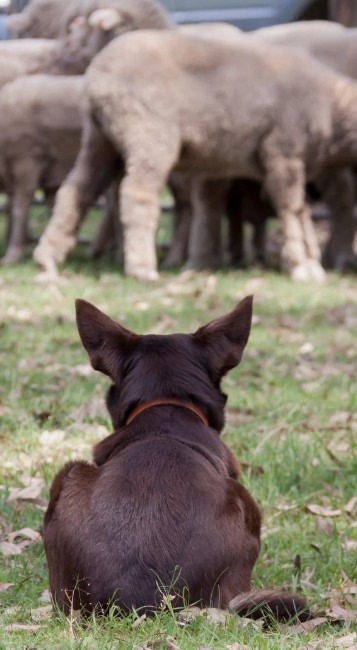
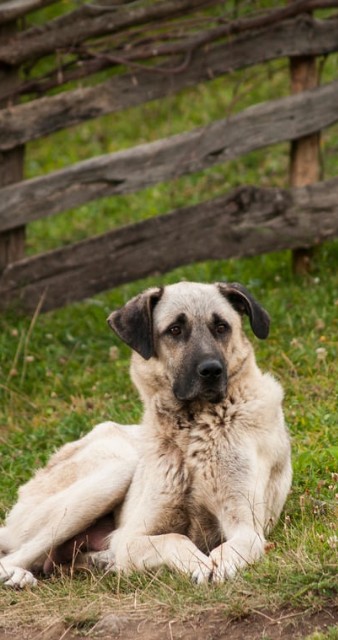
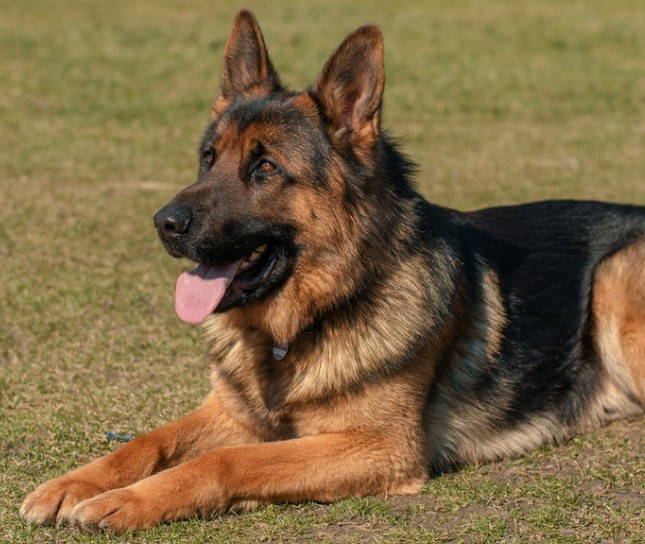
Calmness carries power. Inhibitory control—the ability to stay composed before acting—is hardwired into guardian breeds. This measured vigilance makes them reliable protectors, balancing strength with discernment.
Inappropriate Aggression Toward Visitors: Redefining Threat Assessment
Your guardian lunges at every visitor. Friends stop coming over. You’re considering rehoming. But this behavior often stems from confusion about their role rather than true aggression. Let’s fix the mixed signals.
The Confidence Crisis
Inappropriate aggression often masks insecurity. A confident guardian assesses before acting; an insecure one strikes first. Building confidence reduces reactive aggression:
- Predictable patterns: Establish rigid visitor protocols so your guardian knows what to expect
- Distance work: Practice obedience commands with visitors at distances where your guardian remains calm
- Gradual approach: Slowly decrease distance over multiple sessions as calm behavior increases
- Choice and control: Allow your guardian to choose interaction levels rather than forcing social contact
Retraining the Threat Response
Your guardian needs new criteria for threat assessment:
Week 1-2: Visitors remain outside property. Guardian observes from inside while you interact normally. Reward calm observation.
Week 3-4: Visitors enter property but not home. Guardian watches through windows. Practice “look” and “leave it” commands.
Week 5-6: Visitors enter home but ignore dog completely. Guardian on leash with handler, practicing calm positions.
Week 7-8: Controlled interactions with well-briefed visitors. Parallel walks before any direct interaction.
This seems slow, but rushing creates setbacks. Each positive experience rewrites your guardian’s threat assessment programming.
Escaping and Roaming: The Wandering Guardian
Your guardian has become Houdini, escaping despite your best efforts. This isn’t defiance – it’s usually driven by specific triggers we can address.
Understanding Escape Motivation
Guardians escape for different reasons than other dogs:
- Perimeter expansion: They believe their territory extends beyond your fence
- Threat pursuit: Something triggered their chase instinct
- Searching behavior: Looking for their “flock” (you) when you’re gone
- Breeding drive: Intact guardians will travel miles seeking mates
Physical Containment Solutions
Standard fencing fails because guardians are problem-solvers:
- Double fencing: Create a buffer zone between territories
- Lean-ins: Angle fence tops inward 45 degrees
- Dig guards: L-footers or underground mesh prevent tunneling
- Lockable gates: Guardians learn to operate standard latches
- GPS tracking: For persistent escapers, know immediately when they’ve left
Addressing Root Causes
Physical barriers only work when combined with behavioral solutions:
If escaping occurs during absences, your guardian might have separation anxiety. Gradual desensitization to departures, combined with appropriate mental stimulation, reduces escape motivation.
For perimeter-expansion escapers, walk your property boundaries daily with your guardian. This shared patrol satisfies their need to check territory while reinforcing boundaries.
Breeding-driven roaming requires spay/neuter consideration. While some believe intact guardians work better, the roaming risk often outweighs theoretical benefits.
Multi-Guardian Conflicts: Managing the Pack
Two guardians should mean double protection, but sometimes it means double trouble. Same-sex guardians particularly struggle with hierarchy, especially as they mature.
Preventing Escalation
Guardian conflicts differ from typical dog fights – they’re about resource control and territory, not dominance:
- Separate resources: Feed in different rooms, provide multiple water stations
- Individual attention: Train and exercise separately to prevent competition
- Respect preferences: If one guardian prefers certain areas, don’t force sharing
- Monitor stress signals: Increased marking, stiff body language, or hard stares precede fights
The Rotation Solution
For guardians who cannot coexist safely:
Create a schedule where dogs alternate:
- Morning: Dog A has house and yard access
- Afternoon: Dog B has house and yard access
- Evening: Supervised together time if possible
- Night: Separate sleeping areas
This isn’t ideal but prevents serious fights while maintaining both dogs. Many guardian pairs live successfully this way for years.
When to Seek Professional Help
Some guardian behavioral issues require professional intervention:
- Aggression resulting in bites requiring medical attention
- Resource guarding escalating despite intervention
- Separation anxiety causing self-injury
- Inter-dog aggression with serious fights
- Fear-based aggression toward family members
Choose professionals experienced with guardian breeds specifically. Traditional trainers may not understand guardian psychology, potentially worsening problems. Look for certifications in behavior modification and specific guardian breed experience. 🧡
Puppy Selection & Early Development: Setting the Foundation for Success
Choosing and raising a guardian puppy is unlike selecting any other type of dog. That adorable ball of fluff will become a powerful, independent thinker whose early experiences shape their entire approach to protection and family life. The decisions you make in the first 16 weeks determine whether you’ll have a reliable guardian or a problematic pet.
Evaluating Guardian Puppy Temperament
When you visit that litter of potential guardians, you’re not looking for the same traits that make great pets. The puppy who races to greet you might make a wonderful companion, but they may lack the reserve necessary for protection work. Understanding what to look for – and what to avoid – helps you choose a puppy whose natural temperament aligns with your needs.
The Volhard Test Modifications for Guardians
Standard puppy temperament tests need adjustment for guardian breeds. Here’s what actually matters:
Social Attraction: Unlike retrievers, guardian puppies shouldn’t come running immediately. Look for puppies who observe first, then approach cautiously. This measured response indicates proper threat assessment tendencies.
Following: A guardian puppy might follow at a distance rather than at your heels. This shows independent thinking while maintaining awareness – exactly what you want in a protection dog.
Restraint: Gently hold the puppy on their back. Guardian puppies should resist initially, then relax. Never choose a puppy who immediately submits (too soft) or fights continuously (too hard). You want controlled resistance followed by acceptance.
Sound Sensitivity: Drop keys or clap loudly. Guardian puppies should alert and investigate, not cower or ignore. The ideal response is awareness without overreaction.
Sight Sensitivity: Wave a towel or unfamiliar object. Look for curious investigation rather than fearful retreat or aggressive attack. Guardian puppies should show interest in novel stimuli without extreme responses.
The Parent Assessment
Temperament is highly heritable in guardians. Always meet at least one parent:
- How do they react to you as a stranger?
- Can the owner control them easily?
- Do they show appropriate discrimination between threats and non-threats?
- What’s their barking pattern – constant or purposeful?
If parents show fear aggression, excessive shyness, or uncontrolled aggression, walk away regardless of how perfect the puppies seem. Genetic temperament issues rarely improve with training.
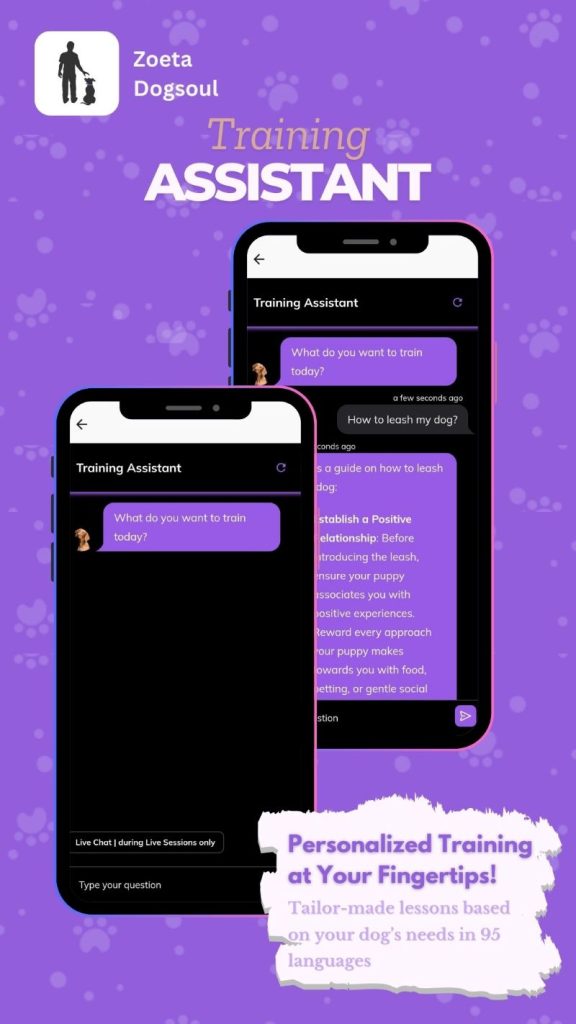
Breeder Red Flags and Green Flags
Not all guardian breeders are equal. Many produce puppies with unstable temperaments or health issues that emerge later. Knowing what to look for protects you from heartbreak and potentially dangerous dogs.
Red Flags – Run, Don’t Walk
- “Rare” colors or sizes: Guardians bred for unusual colors often sacrifice temperament and health
- No health testing: Hip, elbow, and breed-specific testing should be non-negotiable
- Puppies always available: Good breeders have waiting lists
- Won’t let you visit: You should see where puppies are raised
- No contract or health guarantee: Reputable breeders stand behind their dogs
- “Protection trained” puppies: True protection training doesn’t begin until adolescence
- Multiple breeds available: Guardian specialists focus on one or two breeds maximum
- Aggressive marketing of “executive protection” puppies: Quality breeders don’t need gimmicks
Green Flags – Proceed with Confidence
- Working dogs on site: Breeders using their dogs for actual guardian work understand requirements
- Detailed questionnaire: Good breeders screen buyers carefully
- References available: Past buyers will gladly discuss their experience
- Lifetime support: Breeders who offer guidance throughout your dog’s life
- Transparent about challenges: Honest discussion of breed difficulties
- Puppy raising protocols: Early Neural Stimulation, Puppy Culture, or similar programs
- Return policy: Will take dog back if things don’t work out
- Active in breed community: Showing, trials, or breed club involvement
Week-by-Week Socialization Protocols
The period from birth to 16 weeks shapes your guardian’s entire worldview. Miss critical experiences during this window, and you’ll struggle to compensate later. Here’s your roadmap for raising a confident, discerning guardian.
Weeks 0-2: Neonatal Period
Even though puppies seem helpless, important development occurs:
- Daily gentle handling by breeder
- Early Neural Stimulation exercises
- Exposure to different surfaces and temperatures
- Human scent imprinting
You can’t control this period, but ask breeders about their protocols. Puppies raised with Early Neural Stimulation show improved stress tolerance and problem-solving abilities.
Weeks 3-4: Transitional Period
Puppies’ eyes and ears open. Critical for breeder to provide:
- Various household sounds (TV, vacuum, doorbell)
- Different flooring textures
- Gentle introduction to outdoors
- Beginning separation from mother for short periods
Weeks 5-7: First Socialization Window
Still with breeder, but you should visit if possible:
- Meeting different types of people (ages, appearances, energy levels)
- Exposure to other animals if available
- Beginning leash introduction
- Crate familiarization
- Car ride experiences
Week 8: Homecoming
The journey home sets the tone. Make it positive:
- Bring familiar-scented items from breeder
- Plan for frequent stops on long trips
- First night: Balance comfort with independence
- Establish routine immediately
Weeks 8-10: Critical Bonding Period
Your focus: Building trust while establishing boundaries
- Hand feeding some meals to build connection
- Gentle handling exercises daily
- Introduction to your specific environment
- Beginning of house training
- Meeting immediate family only – no visitors yet
- First vet visit made positive with treats and play
Weeks 10-12: Controlled Exploration
Expanding their world carefully:
- Short car rides to various locations (just sit in parking lots)
- Meeting 3-5 new people weekly in controlled settings
- Exposure to different environments (urban, rural, commercial)
- Introduction to livestock or other animals they’ll protect
- Beginning basic obedience in low-distraction environments
- Supervised play with known, healthy, vaccinated dogs
Weeks 12-14: Confidence Building
Challenging appropriately without overwhelming:
- Longer outings to busier locations
- Meeting people of diverse appearances and behaviors
- Exposure to wheelchairs, crutches, uniforms
- Different weather conditions
- Various sounds (construction, traffic, animals)
- Beginning of “job” training (simple guarding exercises)
Weeks 14-16: Solidifying Foundations
The window is closing – maximize experiences:
- Complex environments (farmers markets, pet stores)
- Grouped people (small crowds)
- Unusual surfaces (metal grates, wobble boards)
- Water exposure if not done earlier
- Overnight stays in different environments if possible
- Beginning discrimination training (friend vs. stranger exercises)
Critical Experiences Checklist for Future Guardians
Your guardian puppy needs specific experiences that other puppies might not. This checklist ensures comprehensive preparation:
People Experiences
- Men with beards, hats, sunglasses
- People using mobility aids
- Uniforms (delivery, postal, police)
- Different ethnicities and ages
- Loud, quiet, and unpredictable people
- Groups and individuals
- People approaching your property (controlled)
- Visitors entering your home (controlled)
Animal Experiences
- Cats (even if you don’t have them)
- Livestock (if relevant to your situation)
- Small animals (rabbits, chickens)
- Other dogs of various sizes and temperaments
- Wildlife observation (no chasing)
Environmental Experiences
- Traffic sounds and sights
- Gunshots or fireworks (recorded if necessary)
- Thunder and rain
- Construction sounds
- Crowds and busy environments
- Isolation/quiet environments
- Night walks and experiences
- Various properties and territories
Handling Experiences
- Veterinary examinations
- Grooming procedures
- Nail trimming
- Teeth inspection
- Restraint practice
- Collar grabs
- Taking items from mouth
- Moving during sleep

Early Warning Signs of Temperament Issues
Despite best efforts, some puppies show concerning behaviors. Early recognition allows intervention or rehoming before problems become dangerous.
Concerning Signs by 12 Weeks
- Freezing or pancaking when meeting new people
- Excessive fearfulness despite gentle exposure
- Resource guarding food or toys from humans
- Inability to recover from mild stress
- Persistent bullying of littermates or other dogs
- Complete lack of interest in human interaction
- Extreme sound sensitivity without recovery
- Aggression beyond normal puppy play
What’s Normal vs. Problematic
Normal: Cautious approach to strangers, alert barking, independent play, occasional resource guarding from other dogs Problematic: Fearful aggression, constant anxiety, severe resource guarding from humans, inability to calm
Normal: Mouthing and play biting, testing boundaries, selective listening Problematic: Hard biting that doesn’t respond to correction, aggression during handling, complete lack of bite inhibition
Normal: Interest in moving objects, some chase behavior, excitement about animals Problematic: Obsessive predatory behavior, inability to disengage from stimuli, killing small animals
The Puppy Culture Approach for Guardians
The Puppy Culture protocol, while designed for all puppies, needs modification for guardians. Here’s how to adapt it:
Emotional Stability Over Performance
While Puppy Culture emphasizes performance training, guardians need emotional stability first. Focus on:
- Confidence-building exercises over trick training
- Impulse control rather than speed
- Thoughtful responses versus quick reactions
- Environmental stability before challenging situations
Modified Training Priorities
Standard Puppy Culture Week → Guardian Modification:
Week 8: Crate training → Territory acknowledgment and boundary setting Week 9: Basic obedience → Discrimination exercises (friend vs. stranger) Week 10: Leash walking → Perimeter walking and territory marking Week 11: Recall training → Controlled independence exercises Week 12: Socialization → Appropriate stranger response training
The “Guardian Games”
Adapt Puppy Culture games for guardian development:
- “Cookie in the corner” becomes “watch the boundary” – teaching alert behavior
- “Box games” become “territory games” – establishing appropriate zones
- “It’s your choice” becomes “assess then act” – building decision-making skills
Remember, you’re not raising a performance dog or a pet. You’re developing a guardian whose independent judgment might one day protect your family. Every experience should build toward that goal while maintaining the emotional stability necessary for safe coexistence in modern society. 🐾
Modern Challenges: Guardians in a Changing World
The role of guardian dogs has evolved dramatically from their origins on ancient hillsides. Today’s guardians face unique challenges that their ancestors never encountered, from suburban noise ordinances to liability insurance. Understanding these modern realities helps set realistic expectations for guardian dog ownership.
Urban and Suburban Considerations
That Great Pyrenees might look majestic in your suburban backyard, but are you prepared for the reality of a dog bred to bark at threats all night long? Livestock guardians use barking as their primary deterrent, and they don’t have an “off switch” just because you live in a neighborhood. Your Pyrenees doesn’t understand that the 2 AM jogger isn’t a wolf – they just know something’s moving in their territory.
Many urban areas have strict noise ordinances and size restrictions that make guardian breed ownership challenging. Some insurance companies refuse coverage for certain breeds, regardless of individual temperament. Homeowners associations may have breed-specific bans. These aren’t just inconveniences – they’re potential deal-breakers that require research before bringing home a guardian.
The solution isn’t to avoid guardian breeds in suburban settings, but to choose appropriately and manage expectations. Personal protection breeds like German Shepherds often adapt better to suburban life than livestock guardians. If you’re set on an LGD, consider breeds like the Pyrenees that are somewhat more adaptable, and invest heavily in early socialization and training.
Legal and Liability Considerations
Owning a guardian dog means accepting significant legal responsibility. If your dog injures someone – even while “protecting” your property – you could face criminal charges and civil lawsuits. The independent decision-making that makes guardians effective also means you have less control over their actions than with more biddable breeds.
Proper containment becomes crucial. A guardian who decides the neighbor’s cat is a threat to your children could create a tragic situation. Invisible fences rarely work for guardian breeds – their protective instincts override the discomfort of crossing the boundary. Physical fencing must be tall enough (minimum 6 feet for most guardians) and secure enough to contain a determined dog.
Consider liability insurance carefully. Some companies offer specific coverage for dog-related incidents, but premiums can be substantial for guardian breeds. Document all training and socialization efforts – this evidence could be crucial if an incident occurs. Many guardian owners install security cameras to record interactions, protecting both themselves and their dogs from false accusations.
The Welfare Debate: Working Dogs in Modern Society
As society’s relationship with animals evolves, the ethics of working dogs face increasing scrutiny. Critics argue that using dogs for protection work exploits their natural behaviors for human benefit. Supporters counter that working fulfills these dogs’ biological imperatives, providing purpose and satisfaction impossible in pure pet roles.
Research using the Five Freedoms framework suggests working guardians often experience better welfare than urban pets. They have freedom to express natural behaviors, maintain better physical condition, and suffer less from anxiety and boredom-related disorders. However, challenges exist: delayed veterinary care in remote locations, exposure to predators and weather extremes, and limited reproductive freedom through mandatory sterilization.
The key lies in recognizing guardian dogs as partners rather than tools. This means providing appropriate veterinary care, respecting their need for rest and comfort, and acknowledging their emotional needs. The old paradigm of the isolated, unsocialized guardian is giving way to a more balanced approach that recognizes these dogs as sentient beings deserving of consideration and care.
Building the Guardian Bond: Relationship Dynamics
The relationship between humans and guardian dogs differs fundamentally from typical pet-owner dynamics. You’re not just an owner; you’re a partner in a working relationship that requires mutual respect and understanding.
Trust: The Foundation of Everything
Your guardian dog’s effectiveness depends entirely on their trust in your judgment. If you constantly override their assessments or punish them for protective behaviors, they’ll either become overly aggressive (acting before you can interfere) or shut down entirely (refusing to protect even in genuine danger). Building trust means respecting their instincts while providing gentle guidance when they’re mistaken.
This trust-building starts early. When your young guardian alerts to something benign – perhaps a neighbor’s friendly Golden Retriever – don’t dismiss or punish the alert. Instead, acknowledge it (“Thank you for telling me”), investigate together, and show through your calm demeanor that there’s no threat. This teaches your dog that their warnings are valued but that you’re the ultimate arbiter of threat levels.
Trust also means consistency. Guardian dogs struggle with unclear boundaries or changing rules. If sometimes the delivery person is allowed on the property and sometimes not, your dog can’t develop appropriate discrimination. Clear, consistent patterns help your guardian understand their role and reduce anxiety about decision-making.
Communication: Learning Your Guardian’s Language
Guardian dogs communicate differently than companion breeds. They’re often more subtle in their signals, using body positioning, ear sets, and quiet vocalizations rather than obvious displays. Learning to read these signals helps you understand your dog’s assessment of situations and intervene appropriately when needed.
Watch for the “guardian stare” – that intense, focused gaze they direct at potential threats. The position of their body relative to you or their charges tells you about their threat assessment. A guardian who positions themselves between you and a stranger sees a potential threat. One who remains relaxed beside you has assessed the situation as safe.
Vocalizations vary significantly between breeds and individuals. Some guardians have different barks for different threat levels – a casual “heads up” bark versus an urgent “real danger” alarm. Learning these distinctions helps you respond appropriately and reinforces your dog’s communication efforts. Remember, a guardian who feels heard is less likely to escalate unnecessarily.
Balancing Independence and Partnership
The greatest challenge in guardian ownership is balancing their need for independent decision-making with your need for a manageable companion. This isn’t about dominance or being “alpha” – outdated concepts that don’t apply to guardian relationships. It’s about creating a partnership where both parties understand their roles.
Your guardian needs freedom to assess situations and make initial judgments. Constantly micromanaging or contradicting their assessments undermines their confidence and effectiveness. However, they also need to accept your final decision about threat levels. This balance develops through consistent, respectful interaction over time.
Consider establishing “working” and “off-duty” modes. Many successful guardian owners use specific commands or equipment (like a particular collar) to signal when protective behavior is expected versus when relaxation is appropriate. This helps your dog understand that not every moment requires vigilance, reducing stress and improving their longevity as working partners. 🧡
Senior Guardians: Honoring the Elder Protector
As your guardian ages, their role in your life shifts but doesn’t diminish. Senior guardians often become even more valuable as their experience compensates for reduced physical capabilities. Understanding and adapting to these changes ensures your faithful protector enjoys a dignified, comfortable retirement.
The Transition from Protector to Advisor
Around age 7-8 for giant breeds (later for smaller guardians), you’ll notice physical changes. Your dog might be slower to respond to distant sounds, less eager to patrol in bad weather, or more selective about which threats warrant response. This isn’t laziness – it’s wisdom combined with physical limitations.
Many working farms and families successfully transition senior guardians to “advisory” roles, pairing them with younger dogs who provide the physical response while learning from the elder’s experience. Watching a senior Pyrenees teach a youngster which sounds warrant investigation and which can be ignored is witnessing thousands of years of knowledge transfer. Even if you don’t have a younger dog, respecting your senior’s adjusted capabilities maintains their sense of purpose without overtaxing their aging bodies.
Health Management in Guardian Seniors
Giant breed guardians face accelerated aging compared to smaller dogs. Arthritis is nearly universal, particularly in breeds prone to hip dysplasia. You might notice your senior guardian choosing to sleep near the door rather than patrol the yard – they’re still protecting, just more efficiently. Supporting this transition with comfortable bedding, joint supplements, and appropriate pain management helps maintain quality of life.
Cognitive changes can affect senior guardians. Some develop “sundowner syndrome,” becoming confused or agitated in the evening. Others might forget familiar people or places. These changes can be particularly challenging in protection dogs, potentially leading to inappropriate aggressive responses. Working with a veterinary behaviorist to manage cognitive decline helps ensure your senior remains safe and comfortable.
Regular veterinary care becomes even more crucial in senior years. Blood work every 6 months can catch organ dysfunction early. Dental care prevents painful infections that can affect overall health. Many guardian owners find that investing in senior care extends not just lifespan but quality of life, allowing these magnificent dogs to enjoy their golden years with dignity.
Making the Choice: Is a Guardian Right for You?
After exploring the complex world of guardian dogs, you might be wondering whether one belongs in your life. This decision requires honest self-assessment and careful consideration of your lifestyle, experience, and expectations.
Essential Questions for Prospective Guardian Owners
Before bringing home a guardian, ask yourself these crucial questions:
Can you provide appropriate space? Guardians need room to patrol and establish territory. A studio apartment won’t suffice for a Great Pyrenees, though a German Shepherd might adapt. Consider not just square footage but also fencing, neighbors, and local regulations.
Do you have the patience for a two-year training journey? Guardian dogs aren’t immediately reliable protectors. They require consistent, patient guidance through extended adolescence. If you need immediate protection, consider adopting an adult dog with established training.
Can you handle independent thinking? If you’re frustrated when your dog doesn’t immediately obey, guardian breeds will challenge you. Their independent nature is a feature, not a bug, but it requires adjustment for owners accustomed to eager-to-please breeds.
Are you prepared for the physical demands? Giant guardians require everything in giant proportions – food, medication, grooming tools, vehicle space. A 150-pound dog with diarrhea is a crisis that apartment dwellers can’t fully appreciate. Even smaller protection breeds like Belgian Malinois demand hours of daily exercise and mental stimulation.
Lifestyle Compatibility Assessment
Your daily routine significantly impacts guardian dog suitability. Working from home? You’re well-positioned to provide the consistency and supervision young guardians need. Frequent traveler? Consider how your guardian will be managed during absences – many boarding facilities won’t accept guardian breeds, and in-home sitters might be intimidated.
Family composition matters too. Guardian breeds generally excel with children they’re raised with, but their size and protective instincts can be problematic with visiting kids. Some guardians resource-guard family members, potentially creating conflicts during social gatherings. Elderly family members might struggle with a powerful dog’s physical demands.
Consider your social life honestly. Do you frequently host parties? Have contractors working on your property? Enjoy spontaneous visits from friends? Guardian dogs can complicate social situations, requiring management strategies that some find burdensome. Your dog won’t understand why the plumber is allowed in on Tuesday but the meter reader isn’t on Wednesday.
Alternative Protection Options
If you’re drawn to the security guardians provide but recognize they might not fit your lifestyle, consider alternatives:
Alarm dogs like Miniature Schnauzers or Jack Russell Terriers provide excellent early warning without the size and management challenges of true guardians. They’re alert, vocal, and devoted to their families while remaining manageable for average owners.
Deterrent breeds like Boxers or Standard Poodles look imposing enough to discourage casual threats while maintaining friendlier, more manageable temperaments than true guardians. Their appearance provides security theater that deters many problems without the liability of genuine protection dogs.
Technology solutions including security systems, cameras, and smart doorbells might better serve your protection needs without the 10-15 year commitment of a living guardian. These can be combined with a companionable dog who provides emotional support without protection responsibilities.
Professional protection services offer security without personal dog ownership. This might include neighborhood watch programs, security patrols, or personal protection details for those with specific threats. While lacking the constant presence of a guardian dog, these services avoid the lifestyle adjustments guardian ownership requires.
Conclusion: The Guardian’s Promise
As we reach the end of our exploration into the world of guardian dogs, you’ve discovered that these remarkable animals represent far more than simple security systems with fur. They embody thousands of years of coevolution between humans and dogs, carrying in their genes the ancient promise of protection that helped both species thrive.
Whether you’re drawn to the gentle patience of a Great Pyrenees, the athletic intensity of a Belgian Malinois, or the thoughtful confidence of a Rottweiler, remember that choosing a guardian dog means entering into one of humanity’s oldest working partnerships. These dogs don’t just protect property or livestock – they guard the trust we’ve placed in them since ancient shepherds first welcomed wolf-descendants to their fires.
The decision to bring a guardian into your life shouldn’t be taken lightly. These dogs require understanding, patience, and respect for their unique psychology and needs. They challenge us to become better communicators, more consistent leaders, and more thoughtful partners. But for those ready to embrace this challenge, the reward is a relationship unlike any other – a bond forged in mutual respect and strengthened by shared purpose.
As you consider whether a guardian belongs in your future, remember that the best guardian-owner relationships aren’t about dominance or control, but about partnership and understanding. These dogs offer us their ancient wisdom, their unwavering loyalty, and their lives if necessary. In return, they ask for clarity, consistency, and recognition of their remarkable capabilities.
Whether you ultimately choose a guardian breed or decide they’re not right for your situation, you now understand the depth and complexity of these remarkable dogs. And if you do welcome a guardian into your life, you’re prepared to honor the ancient compact between human and protector – a promise that has endured for six thousand years and continues to evolve with each new partnership formed.
The guardian dog’s story is far from over. As our world changes, these adaptable, intelligent partners continue to find new roles while maintaining their essential nature. From protecting endangered species in Africa to providing security in suburban homes, guardian dogs prove that some partnerships truly are timeless. 🐾

